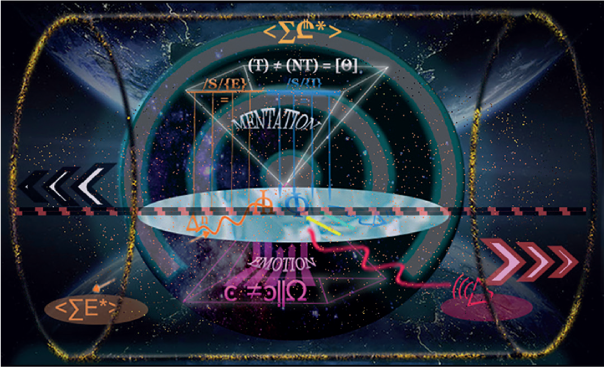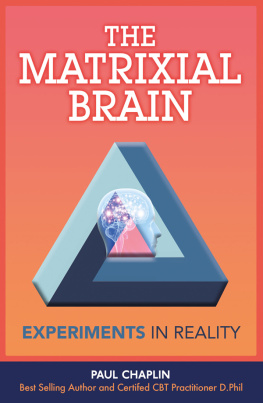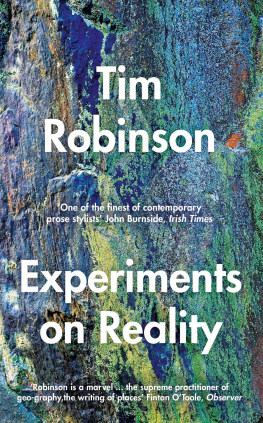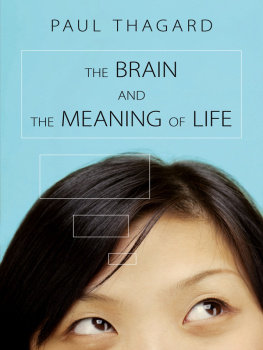Paul Chaplin - The matrixial brain experiments in reality
Here you can read online Paul Chaplin - The matrixial brain experiments in reality full text of the book (entire story) in english for free. Download pdf and epub, get meaning, cover and reviews about this ebook. year: 2021, genre: Religion. Description of the work, (preface) as well as reviews are available. Best literature library LitArk.com created for fans of good reading and offers a wide selection of genres:
Romance novel
Science fiction
Adventure
Detective
Science
History
Home and family
Prose
Art
Politics
Computer
Non-fiction
Religion
Business
Children
Humor
Choose a favorite category and find really read worthwhile books. Enjoy immersion in the world of imagination, feel the emotions of the characters or learn something new for yourself, make an fascinating discovery.
- Book:The matrixial brain experiments in reality
- Author:
- Genre:
- Year:2021
- Rating:3 / 5
- Favourites:Add to favourites
- Your mark:
- 60
- 1
- 2
- 3
- 4
- 5
The matrixial brain experiments in reality: summary, description and annotation
We offer to read an annotation, description, summary or preface (depends on what the author of the book "The matrixial brain experiments in reality" wrote himself). If you haven't found the necessary information about the book — write in the comments, we will try to find it.
The matrixial brain experiments in reality — read online for free the complete book (whole text) full work
Below is the text of the book, divided by pages. System saving the place of the last page read, allows you to conveniently read the book "The matrixial brain experiments in reality" online for free, without having to search again every time where you left off. Put a bookmark, and you can go to the page where you finished reading at any time.
Font size:
Interval:
Bookmark:

 Copyright G2 Entertainment 2021
Copyright G2 Entertainment 2021First edition Published by G2 Entertainment All rights reserved. No part of this publication may be reproduced, stored in the retrieval system, or transmitted in any form by any means, electronic, mechanical, photocopying, recording or otherwise, with the prior permission of the publishers. Every effort has been made to ensure the accuracy of the information within this publication but the publishers cannot be held responsible for any errors or omissions. Views expressed are those of the author and do not necessarily represent those of the publishers. ISBN: 978-1-78281-802-1 ANNEXES
Matrixial Science rests on these propositions: (1) That there is a universe of reality independent of the perspective of any individual. (2) That any individual (or collective of them) can only interact with that reality in accordance with the processes which are described by the laws of Matrixial Logic. The previous 2 books were filled with Experiences. The Experiences were created from the ideas which infuse Matrixial Logic. By exploring those Experiences, the reader is able to obtain a very personal perspective of those ideas. To see for themselves how the human brain responds, as a matrixial Systems Architecture, to specifically designed stimuli.
We used an independent research company Roots Research Ltd, All the test Sets are set out in Annex A. The Results are tabulated in Annex B. We wanted to create stimuli which could be administered to random test subjects, thereby creating a data pool of responses, from which we could draw empirical conclusions. You, the reader, must judge if this enterprise was successful. One of the advantages of these Experiments, compared to typical neuroscience or psychological arrangements, is that the reader can try it for themselves. So, youre not limited to passive consideration and analysis of the Tests and Results.
You can have a go yourself: and please do. A great debt of thanks is owed to the teams at Roots Research, La-Plage and to the enormously talented Fabian Goguta, who derived the statistical analyses of the data sets. Fabian has been a researcher for 8 years. He has an M.S. in Psychology, which gave him a broad base from which to approach different aspects of a research project, including literature reviews and statistical analyses. His experience includes both small and large research projects in areas ranging from biopsychology to counselling.
He has published his own papers, for example: 11 ways clinical trial protocol design can improve speed and costs. Thanks also go to the 90 Matrixial brains who patiently spent their time being subjected to moving mental paperclips, writing with their other hand, and meeting their Avatars: amongst much else. Now its your turn. Paul Chaplin 2020
 Matrixial Logic Matrixial Logic is a toolkit. Unlike classical logic, its a methodology of invention. Chapter 3 of Matrixial Logic set out a critique of classical logic.
Matrixial Logic Matrixial Logic is a toolkit. Unlike classical logic, its a methodology of invention. Chapter 3 of Matrixial Logic set out a critique of classical logic. Thats the logic which begins with the law of identity proposition: A=A Matrixial Logic (ML) begins with the law of inequality proposition: A A As we write the foundational equations of ML: (A) (NOTA) = [E] and (A) (-A) = [I] In ML, we take as our starting point the difference between anything and any other thing: even an iteration of the first thing. We point out that reality the world out there is not a collection of identities at all. That the world is a universe of differences is the bedrock of the material sciences. Ever since modern science was invented in the 17th century. The idea that all things have an immanent essence an identity - is wholly unscientific. It was a prejudice amongst the classical Greek thinkers.
That prejudice became transmuted, through a curious admixture of Platonic philosophy, Aristotelian physics and middle eastern esoteric deism, into what became orthodox Christianity. At the dawn of the modern scientific era, logic attempted to rescue thinking from the dogmas of medieval scholasticism. This paralleled and paved the way for the Copernican, and Newtonian revolutions. But, as material science went on to engage with the universe, logic remained stuck in the ruts originally made by ox carts trundling past the groves of classic Greek academies. We say that ML is actually the logic of the material sciences. Not just our method of thinking about the world, but the way that the universe actually is.
Thats why this book is sub-titled Experiments In Reality. The Matrixial Self The human Self is part of that reality. We restate a core proposition of Secret Self: Mentation How we can think governs what we can think Emotion What we can emote governs how we emote Just as the material universe acts in accordance with laws which we have discovered over the last 400 years, so the Self is governed by its place in objective reality. Our subjective self /S/: is bounded by a Systems Architecture:  By understanding, with ML, the processes of that Systems Architecture of Self, we are able to derive laws of Matrixial Science. The Matrixial Brain The last 2 decades of neuroscience investigation have enabled a paradigm shift in our understanding the human brain. We are no longer limited to the attempt to understand subjectivity and personality, by reference to the mechanical interactions of synapses via chemicals and ionic electrical transmissions.
By understanding, with ML, the processes of that Systems Architecture of Self, we are able to derive laws of Matrixial Science. The Matrixial Brain The last 2 decades of neuroscience investigation have enabled a paradigm shift in our understanding the human brain. We are no longer limited to the attempt to understand subjectivity and personality, by reference to the mechanical interactions of synapses via chemicals and ionic electrical transmissions.
We now have empirical evidence for interaction between electromagnetic fields in the brain (arising from synaptic Its simplistic but contextually useful, to say that ML equations are field equations. Not quantitively, the qualitative logic of field equations.
| Fundamental Equations | |
| Form in [E] | (A) (nA) = [E] |
| Form in [I] | (A) (-A) = [I] |
| in [E] | [E]n [E]n |
| in [I] | [I]n [I]n |
| Modes of Interaction | |
| |W|orld | |W| =>|EF| |
| |P| | |P| =>|EF| |
| /S/ | /S/ =>|EF| |
| Exclusion Function: Quantised | |
| Capacity Gapping | () () [x] |
| Plurality | [x]n => () | [x]n => () |
| Ohm Function: Qualitised | |
| Aggregation | () () n |
| () (n) = [] | |
| Referral to /S/ | [ 1] [ n] <> |
Font size:
Interval:
Bookmark:
Similar books «The matrixial brain experiments in reality»
Look at similar books to The matrixial brain experiments in reality. We have selected literature similar in name and meaning in the hope of providing readers with more options to find new, interesting, not yet read works.
Discussion, reviews of the book The matrixial brain experiments in reality and just readers' own opinions. Leave your comments, write what you think about the work, its meaning or the main characters. Specify what exactly you liked and what you didn't like, and why you think so.












